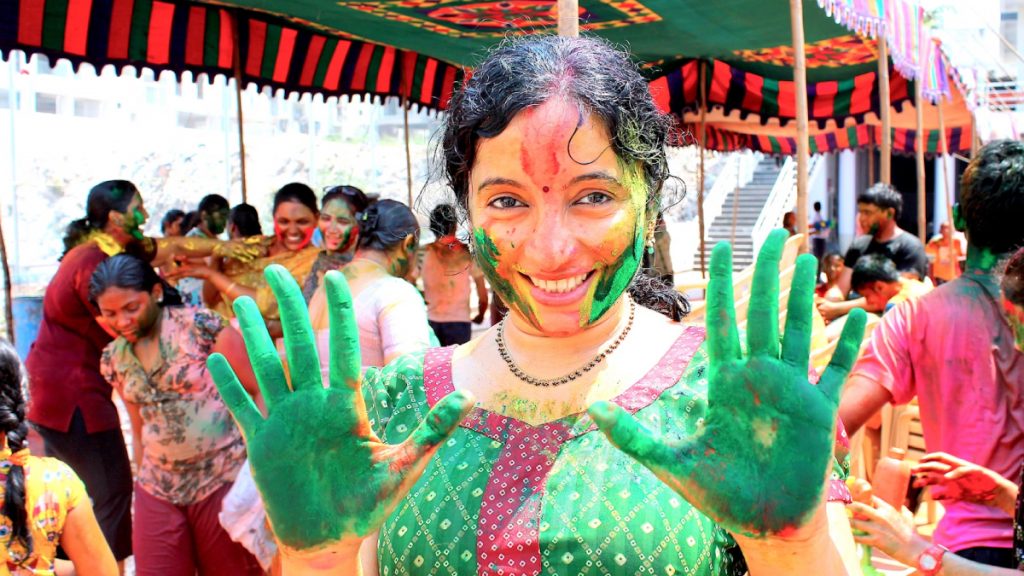Holi, also known as the Festival of Colours, is one of India’s most joyous and vibrant festivals. Celebrated with enthusiasm across the country, Holi marks the arrival of spring, the end of winter, and the blossoming of love. It is a day to forgive, forget, and repair broken relationships, as people come together to throw coloured powders, drench each other in water, and celebrate the victory of good over evil.
Holi Dates for 2024, 2025, and 2026
To help you plan for the celebration of Holi in the coming years, here are the dates:
| Year | Date | Day |
|---|---|---|
| 2024 | 25/03/2024 | Monday |
| 2025 | 14/03/2025 | Friday |
| 2026 | 03/03/2026 | Tuesday |
The Significance of Holi
Holi holds deep cultural and religious significance in India. The festival is rooted in Hindu mythology, particularly in the legend of Prahlad and Holika. According to the story, Prahlad, a devotee of Lord Vishnu, was saved from a fire meant to kill him, while Holika, his evil aunt, was burned instead. This event symbolises the triumph of good over evil.
Another prominent story associated with Holi is that of Lord Krishna, who, as a playful deity, would throw coloured water and powders on the gopis (milkmaids). This playful celebration of colours is echoed in the way Holi is celebrated today.
Holi is also a time for people to put aside their differences, let go of grievances, and celebrate with family, friends, and communities in an atmosphere of unity and happiness.
How Holi is Celebrated
Holi is a two-day festival, with the first day known as Holika Dahan and the second day being the main festival of colours.
- Holika Dahan (The Bonfire Night): On the night before Holi, people gather to light bonfires in honour of Prahlad’s miraculous escape. This ritual symbolises the burning of evil and the triumph of good. Prayers are offered for the well-being of loved ones, and people sing and dance around the fire.
- The Festival of Colours: The second day is the most anticipated part of the festival, where people of all ages take to the streets to throw coloured powders (gulal) and spray coloured water at each other. Water balloons and water guns add to the fun and excitement.
- Music and Dance: Holi is celebrated with lively music, including traditional folk songs and modern Bollywood tunes. People dance in the streets, smear each other with colours, and partake in festive treats such as gujiya (a sweet pastry) and thandai (a special milk-based drink).
Holi in Different Parts of India
The celebration of Holi varies across India, with each region adding its unique touch to the festival.
- North India: In states like Uttar Pradesh, Bihar, and Rajasthan, Holi is celebrated with exuberant processions, traditional folk music, and vibrant colours. The town of Mathura, the birthplace of Lord Krishna, is especially famous for its grand Holi celebrations.
- West India: In Gujarat and Maharashtra, Holi is known for its fun-filled dances and colourful parades. In Gujarat, the festival coincides with Dhuleti, a local event where people joyously play with colours.
- South India: While Holi is not as widely celebrated in South India, certain regions observe the festival with their own traditions. In Tamil Nadu, for instance, the festival is associated with the legend of Kamadeva, the god of love.
- East India: In West Bengal and Odisha, Holi is known as Dol Jatra or Dol Purnima, and it is celebrated with rituals honouring Lord Krishna. Here, the focus is more on religious observances, with devotees singing devotional songs and performing dances around the idol of Lord Krishna.
Holi – A Celebration of Unity and Joy
Holi transcends religious and regional boundaries, bringing people together in a spirit of joy and camaraderie. It is a time when people from all walks of life join in the celebrations, regardless of age, gender, or social status. The festival’s vibrant colours represent the diversity of life, while its joyous atmosphere fosters a sense of community and goodwill.
The festival is not only a celebration of colours but also a reminder of the importance of forgiveness, friendship, and love. Holi’s message of unity and happiness resonates across India and the world, making it one of the most beloved festivals in the Hindu calendar.
Popular FAQs about Holi
- Is Holi a public holiday in India? Yes, Holi is a gazetted public holiday in most states of India. However, in some southern states, it may be observed more regionally.
- What is the significance of Holi in Hinduism? Holi celebrates the triumph of good over evil, as symbolised by the legend of Prahlad and Holika. It is also a festival of joy, unity, and the arrival of spring.
- How do people celebrate Holi in India? Holi is celebrated by lighting bonfires on the night of Holika Dahan, followed by a day of throwing coloured powders, playing with water, dancing, and enjoying festive foods.
- Why is Holi called the Festival of Colours? Holi is called the Festival of Colours because of the tradition of throwing vibrant coloured powders and water during the celebrations, symbolising joy, love, and the victory of good over evil.

